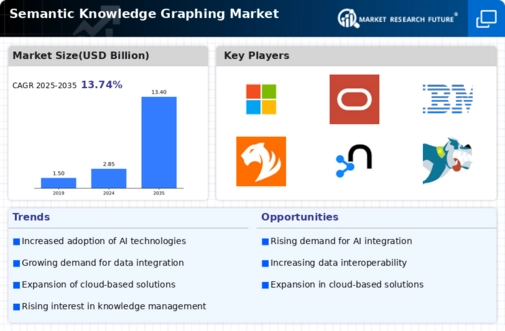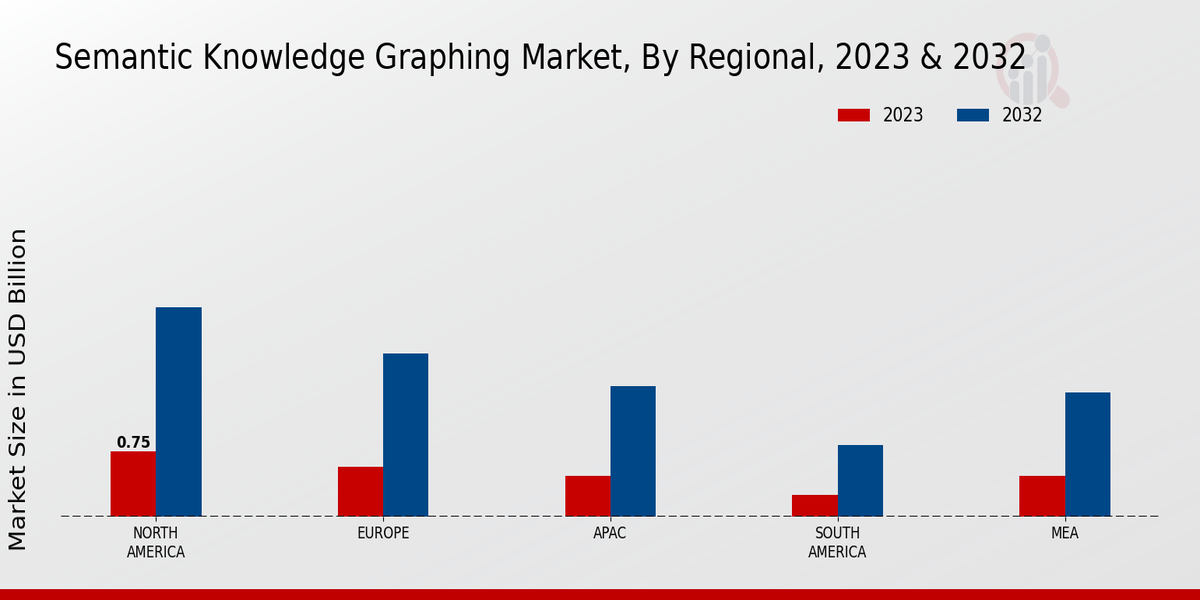Market Growth Projections
The Global Semantic Knowledge Graphing Market Industry is poised for substantial growth, with projections indicating a rise from 2.85 USD Billion in 2024 to 13.4 USD Billion by 2035. This growth trajectory suggests a compound annual growth rate (CAGR) of 15.11% from 2025 to 2035. Such figures highlight the increasing importance of semantic knowledge graphs in various sectors, as organizations seek to harness the power of data for strategic advantage. The market's expansion reflects a broader trend towards data-driven decision-making and the integration of advanced technologies.
Increased Focus on Data Governance
The Global Semantic Knowledge Graphing Market Industry is witnessing an increased focus on data governance as organizations strive to ensure data quality and compliance. With the proliferation of data regulations, companies are compelled to adopt robust governance frameworks that facilitate better data management. Semantic knowledge graphs play a crucial role in this context, as they provide a structured approach to data organization and retrieval. By implementing these frameworks, organizations can enhance their data governance strategies, ultimately leading to improved trust and transparency in data usage.
Rising Demand for Data Integration
The Global Semantic Knowledge Graphing Market Industry experiences a surge in demand for data integration solutions. Organizations increasingly recognize the necessity of unifying disparate data sources to derive actionable insights. This trend is particularly evident in sectors such as healthcare and finance, where the ability to connect and analyze vast amounts of data can lead to improved decision-making and operational efficiency. The market is projected to reach 2.85 USD Billion in 2024, reflecting a growing investment in technologies that facilitate seamless data integration and knowledge representation.
Advancements in Artificial Intelligence
Advancements in artificial intelligence are propelling the Global Semantic Knowledge Graphing Market Industry forward. AI technologies enhance the capabilities of semantic knowledge graphs by enabling more sophisticated data analysis and natural language processing. These advancements allow organizations to extract deeper insights from their data, thereby improving customer experiences and operational efficiencies. As AI continues to evolve, the market is expected to grow significantly, with projections indicating a value of 13.4 USD Billion by 2035. This growth underscores the potential of AI-driven semantic knowledge graphs in transforming data utilization across various industries.
Growing Adoption of Cloud-Based Solutions
The growing adoption of cloud-based solutions is a significant driver for the Global Semantic Knowledge Graphing Market Industry. As businesses migrate to cloud environments, the need for scalable and flexible data management solutions becomes paramount. Semantic knowledge graphs, which can be easily integrated into cloud platforms, offer organizations the ability to manage and analyze data efficiently. This trend is likely to accelerate market growth, as cloud adoption continues to rise, providing organizations with the tools necessary to leverage their data assets effectively.
Emergence of Knowledge-Driven Applications
The emergence of knowledge-driven applications is reshaping the Global Semantic Knowledge Graphing Market Industry. These applications leverage semantic knowledge graphs to provide enhanced functionalities, such as personalized recommendations and intelligent search capabilities. Industries like e-commerce and education are increasingly adopting these applications to improve user engagement and satisfaction. As the demand for knowledge-driven solutions grows, the market is expected to expand, with a projected CAGR of 15.11% from 2025 to 2035, indicating a robust future for semantic knowledge graph technologies.














